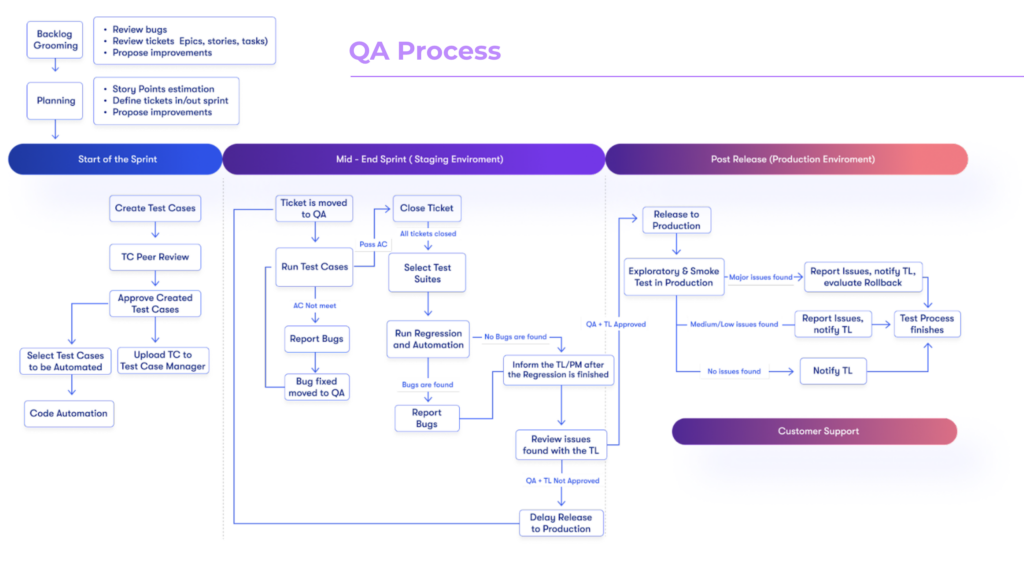Creating a holistic approach to quality assurance that drives real business value

Author
Bruno PiñeiroBruno Piñeiro is the Manager of the QA Studio at Moove It. With more than 6 years of experience in quality assurance he has set the guidelines, processes and quality standards in many Moove It projects. He manages the studio needs and enables its members to work in a proactive environment while maintaining quality standards.
Moove It’s Quality Assurance Studio has quickly become one of the core pillars here at Moove It, involved in most of our client engagements. Recently, I and the rest of my colleagues in the studio presented the highlights of our recent work, and I want to share some of these insights in this article.
Our values drive our approach: Quality over quantity
One of our core values at Moove It is “quality over quantity” – we create and deliver the powerful digital experiences that businesses need today. And to do this, quality assurance plays a fundamental role – not just in identifying defects in software, and reducing flaws, but also in playing an active role in the upfront design of software products and improving their overall quality. In turn, this saves our clients resources and money.
During our presentation, we emphasized three main principles:
- We provide clients with a holistic approach to quality assurance. Quality assurance is not just about reducing the risk of software failure – although clearly, this is a critical element. It is also about creating an entire “QA system” – that drives a holistic improvement to software engineering, from creating the appropriate documentation, to recognizing architectural risks early on in the development process. Documentation for example ranges from defining Moove It’s testing policies, roles, KPIs, processes, as well as templates for test plans and QA assessments.
- Quality assurance needs to take place within the context of Agile development. We work almost exclusively with Agile development methodologies, and so we’ve built our QA process to fit seamlessly into agile processes. We use the typical agile artifacts such as the backlog, grooming, Sprints, in order to provide a structured process. Meanwhile, having a quality assurance expert involved in the validation and estimation of Stories, provides a valuable perspective in comparison to that of the rest of the development team – with testers often able to identify possible roadblocks or issues that could impact the time of development.
- Automation is critical, but can’t do everything. A common misconception today is that testing can be completely automated. While that’s very much not the case, automation is incredibly valuable. Our strategy is to use automation where necessary and where we believe it will add value. For example, in cases where there is a lot of data, or there is sensitive data, and where we have existing test cases, we use automation extensively. Typically we use Selenium and Cypress test automation frameworks.

Moove It’s Quality Assurance Process
What is the value of QA?
From time to time, we are involved in discussions with clients about bringing onboard a quality assurance expert to their project. Here, clients often want to see the value this investment will provide. While intellectually the benefits are clear to explain and understand, it can be harder to quantify in metrics necessary to justify the investment. That’s why Moove It’s QA Studio has spent time evaluating the dollar value of quality assurance and the services we provide. At a high-level, we calculated that during 2021, the studio provided more than $500,000 in savings among a small sub-segment of our clients – this amount representing issues that probably would not have been detected in the early stages, and would therefore likely have appeared in production, had our studio not been involved.
Want to know more?
If you’re interested in finding out more about our work with quality assurance, our QA Studio, and the value we can bring to your organization, don’t hesitate to get in contact with us.


